Indexed In
- Open J Gate
- Genamics JournalSeek
- Academic Keys
- JournalTOCs
- CiteFactor
- Ulrich's Periodicals Directory
- Access to Global Online Research in Agriculture (AGORA)
- Electronic Journals Library
- Centre for Agriculture and Biosciences International (CABI)
- RefSeek
- Directory of Research Journal Indexing (DRJI)
- Hamdard University
- EBSCO A-Z
- OCLC- WorldCat
- Scholarsteer
- SWB online catalog
- Virtual Library of Biology (vifabio)
- Publons
- Geneva Foundation for Medical Education and Research
- Euro Pub
- Google Scholar
Useful Links
Share This Page
Journal Flyer

Open Access Journals
- Agri and Aquaculture
- Biochemistry
- Bioinformatics & Systems Biology
- Business & Management
- Chemistry
- Clinical Sciences
- Engineering
- Food & Nutrition
- General Science
- Genetics & Molecular Biology
- Immunology & Microbiology
- Medical Sciences
- Neuroscience & Psychology
- Nursing & Health Care
- Pharmaceutical Sciences
Research Article - (2020) Volume 11, Issue 11
First Report of Morphology and Expression of Symptom in S9 Ramnad Red Mundu Chilli (Capsicum annuum L.) in Ramanathapuram District, Tamil Nadu, India
Sudha A1*, Rajesh M1 and Senthil Kumar M22Department of Agricultural Entomology, Krishi Vigyan Kendra, Sandhiyur, Tamil Nadu, India
Received: 08-Oct-2020 Published: 19-Nov-2020, DOI: 10.35248/2157-7471.20.11.526
Abstract
S9 Ramnad red mundu chilli is a round shaped chilli, grown in Ramnad district in Tamil Nadu, India. Shot hole symptom with inter tissue damage without any sunken necrotic spot on the outer layer of the fruit. Expression of symptoms in the matured fruit shows that the larvae act a predisposing factor and it would pave way for the secondary fungal infection in the field.
Keywords
Colletotrichum capsici; Helicoverpa armigera; S9 ramnad red mundu chilli
Introduction
Chilli is a universal spice crop of India grown in nearly all the states of the country. Chilli is reported to be a native of South America and is widely distributed in all tropical and subtropical countries including India. It was first introduced in India by Portuguese towards the end of 15th Century. Now it is grown all over the world except in colder parts. S9 Ramnad red mundu chilli is a round shaped chilli, grown in Ramnad district in Tamil Nadu, India. Especially, Mundu red chilli is very popular in south indian cuisine. It has a dark shiny & thick skin and available with or without stem. Botanical name of S9 Ramnad red mundu chilli is Capsicum annuum L. and family name is Solanaceae. The major districts contributing towards the production of Chillies are Ramanathapuram, Thoothukudi, Sivagangai, Vellore and Dindigul. The ‘Mundu’ variety was cultivated on about 20,000 hectares in the district and the production reached about 40,000 tonnes in a season. In 2017 the total area under cultivation is around 831000 Ha [1] in Tamil Nadu and this S9 Ramnad red mundu chilli occupies 44561 Ha. from this five districts alone [2]. It commanded good demand in both domestic and international markets [3]. The type of this chilli is Round shaped, Yellowish red, Shiny & Medium pungency. The length is 6 to 8 cm (without stem). This type of chilli is preferred due to its good flavor, mouthwatering flavours to chutneys and exported worldwide. Also, Used for food coloring.
Methodology
During 2010–2011, India was the leading exporter and producer of chilli in the world, but recently due to beg off in chilli production, it stands at third place in terms of its production. The decline in chilli production has been attributed to the diseases associated with crop like anthracnose or fruit rot causing the major contribute to crop loss. The disease causes severe damage to both mature fruits in the field as well as during their storage under favorable conditions, which amplifies the loss in yield and overall production of the crop [4]. Colletotrichum capsici is one of the most important plant pathogens worldwide causing the economically important disease anthracnose in a wide range of hosts including cereals, legumes, vegetables, perennial crops and tree fruits. Among these hosts, chilli (Capsicum annuum L.), an important economic crop worldwide, is severely infected by anthracnose which may cause yield losses of up to 50%. Typical anthracnose symptoms on chilli fruit include sunken necrotic tissues, with concentric rings of acervuli [5]. Fruits showing blemishes have reduced marketability. Fruit borer, Helicoverpa armigera is a polyphagous pest and the peak activity is noticed during October to June month in chilli ecosystem. The combined infection by fungus and insect could make to reveal the damage in mundu chilli. Hence, there may be a chance of interaction of both the larvae and fungi. The insect made the puncture on the fruit and it pave way for the secondary infection made by the pathogen. This paper discuss about the symptom made by the larvae, fungus and morphology of the fungi that causing the infection.
Symptomatology and Isolation
During March-April, 2017 very high disease incidence (up to 100% of plants) was observed in farmer's fields in Kannamangalam saveriyarpuram village in Illayankudi block in Ramnad district. The chilli was cultivated in vast area in rainfed condition (Figures 1 and 2). The farmers have cultivated as rainfed crop with the help of monsoon received during September to November. During March the temperature go beyond 37℃. The fruit was in ripening stage and the fungus was very active and survives in high temperature also. The characteristic field symptoms observed was entirely different compare to the samba chilli variety. The following symptoms were observed in the field.
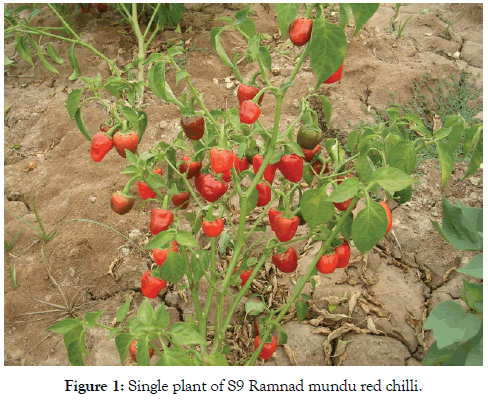
Figure 1: Single plant of S9 Ramnad mundu red chilli.
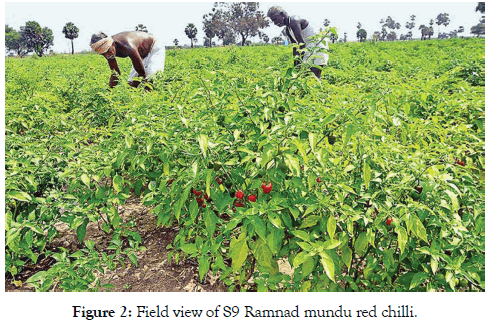
Figure 2: Field view of S9 Ramnad mundu red chilli.
1. There is no loss of percent plant population due to the infection (Figure 3).
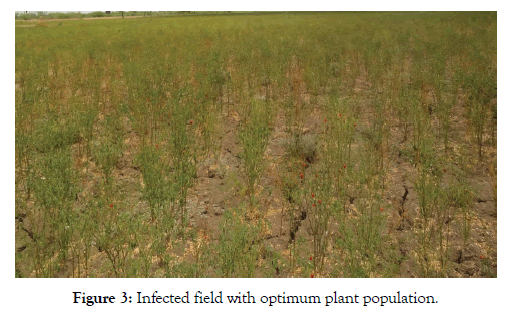
Figure 3: Infected field with optimum plant population.
2. There is no concentric ring and sunken necrotic tissues were observed.
3. The percent yield loss was upto 60 percent. Even though the infection is severe the matured infected fruit did not withered from the plant (Figure 4).
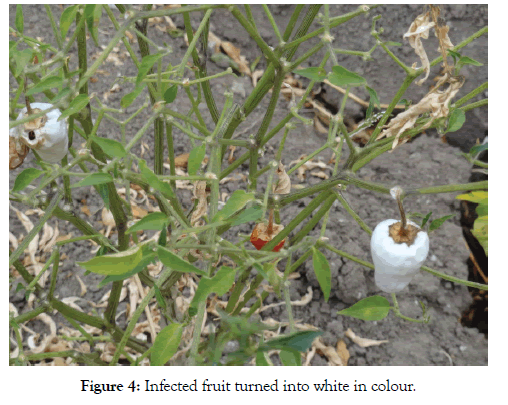
Figure 4: Infected fruit turned into white in colour.
4. There is no difference in fruit shape and size
5. The entire leaf was shredded from the plant.
6. The dieback symptoms were observed in infected twigs.
7. The infected fruit was turned into white in colour without any sunken parts (Figure 4).
8. On the surface of the fruit a small hole was observed. This damage was due to the fruit borer infected by Helicoverpa armigera (Figure 4)
9. Shot hole symptom and seed infection were observed without any blemishes or sunken spot on the outer surface of the matured fruit.
10. Inside the infected fruit the seed material was covered with the greyish fungal mass (Figure 5).
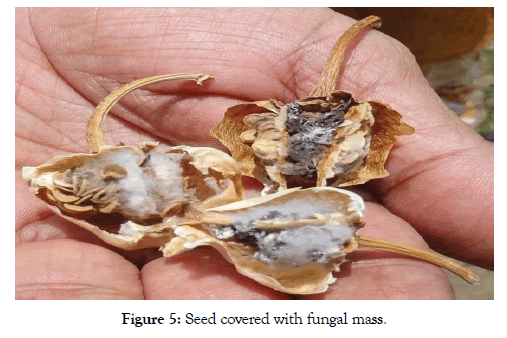
Figure 5: Seed covered with fungal mass.
Morphology
The characteristic symptoms appear on the plant were, die-back of twigs. There is a shot hole punctured by the larvae of Helicoverpa armigera. There is no evidence of circular sunken lesions on the fruit as that of anthracnose in samba variety. The pathogen readily colonizes the seed coat and peripheral layers of the endosperm, capsaicin glands, even in moderately colonized seeds. Heavily colonized seeds had abundant inter- and intracellular mycelia and acervuli in the seed coat endosperm and embryo, showing disintegration of parenchymatous layers of the seed coat and depletion of food material in endosperm and embryo. The affected seeds when observed under a microscope, acervuli structures containing setae hairs entrapping the conidia of the pathogen were recorded. Further, the pathogen forms micro sclerotia in plant debris or seed, soil, which is the mode of survival under unfavorable conditions.
Mean colony diameter
The mean colony diameter of C. capsici was found to be 7.6 recorded on PDA media after 10 DAI. The diameter of pathogen was 78.26 on PDA media. The colony colour of C. capsici was determined on PDA. The colony colour of C. capsici is dark gray in PDA media after 10 DAI (Figure 6). The isolate was observed for colony reverse in terms of concentric ring and zones formed by acervuli. Yellow pigment was produced on PDA medium even after 10 days of inoculation (DAI). The C. capsici showed sporulation on PDA media after 10 DAI and produced falcate conidia in the range of 3.68 × 104 /ml on PDA (Figure 7). Mycelium Growth Pattern The margin of colony of C. capsici was irregular with fluffy mycelium surface on PDA.
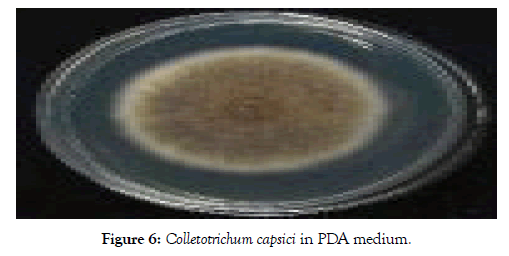
Figure 6: Colletotrichum capsici in PDA medium.
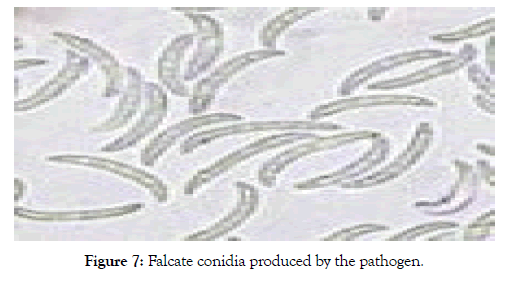
Figure 7: Falcate conidia produced by the pathogen.
This type of morphology in C. capsici was observed from S9 Ramnad red mundu chilli and it can be surprise of any researchers and also desire for further research. To our knowledge, this is the first report of combined infection of fruit rot and fruit borer in this type of mundu chilli in India. The disease spread from infected field to healthy field in several ways. The farmers were selected the seeds from the infected fruit and this infected seed serve as primary inoculum for the next crop and it can spread through the irrigation water.
Discussion and Conclusion
The expression of symptom in the matured fruit clearly shows the larvae act a primary source it would pave way for the fungal infection as a secondary infection. The fruit were pierced by the larvae had been infected with fungal mycelium. The parts of the fruit Viz., seeds, capsaicin glands, endocarp are covered with mycelial mat. However, this is the new symptom observed in the field and this may lead to study the relationship between fruit borer (Helicoverpa armigera) damage and anthracnose disease. Hence, it may pose a serious threat to the cultivation of red mundu chilli in southern district of Tamil Nadu, India and making it essential to develop an adequate management strategy for both the damage.
REFERENCES
- Horticultural Statistics at a Glance, 2017.
- Agriculture Department, Demand No. 5 Policy Note, Tamil Nadu, India, 2018-2019.
- The Hindu Daily: TNAU starts research to develop Ramnad Mundu-like chilli variety, Ramanathapuram, 2016.
- Saxena A, Raghuwanshi R, Gupta VK, Singh HB. Chilli Anthracnose: The Epidemiology and Management. Front Microbiol. 2016;7:1527.
- Manandhar JB, Hartman GL, Wang TC. Anthracnose development on pepper fruits inoculated with Colletotrichum gloeosporioides. Plant Dis. 1995;79:380-383.
Citation: Sudha A, Rajesh M, Kumar MS (2020) First Report of Morphology and Expression of Symptom in S9 Ramnad Red Mundu Chilli (Capsicum annuum L.) in Ramanathapuram District, Tamil Nadu, India. J Plant Pathol Microbiol 11:526. doi: 10.35248/2157-7471.20.11.526
Copyright: © 2020 Sudha A, et al. This is an open-access article distributed under the terms of the Creative Commons Attribution License, which permits unrestricted use, distribution, and reproduction in any medium, provided the original author and source are credited

